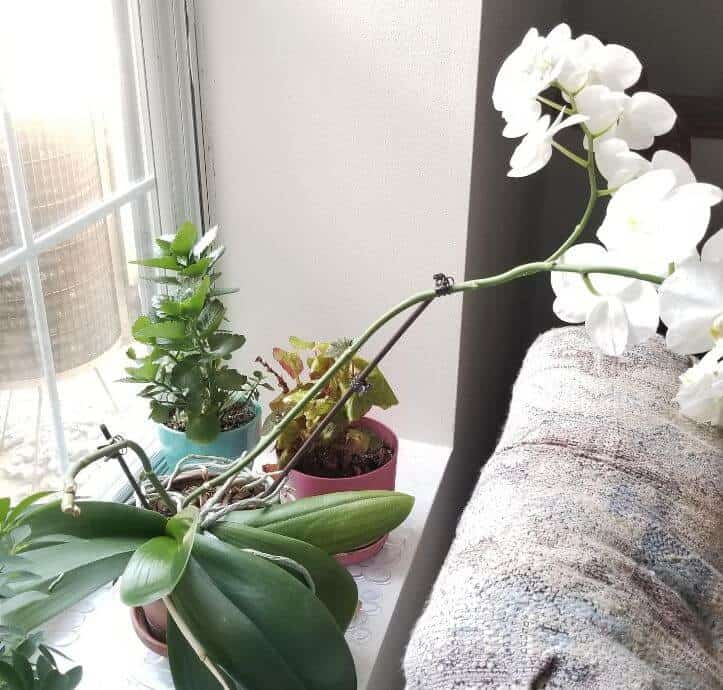Last Updated on June 23, 2023 by a Friendly Gardener
As epiphytes, orchids when found in their natural habitats, will not be growing in a soil bed but are generally attached to trees. These plants will often lean when growing on the side of a tree trunk. Miniscule seeds blown by the wind land on tree trunks and if environmental conditions are right, they will develop into plants. They also remain above puddles of accumulated water that can lead to root rot by latching on to trees or others.
Some breeders prefer this position, particularly when cultivating a smaller variety. So, it’s quite natural for Phalaenopsis, Cattleya, and Oncidium orchids to produce aerial roots that grow in different directions and the plant may incline in one direction or another.
Orchids cultivated in greenhouses tend to grow straight upwards because their light source comes from above. Orchids grown in houses and offices will grow toward a light source whether a window or fluorescent light bulb. Orchids that grow in tropical rainforests will naturally grow crooked because found under a canopy of trees. To avoid your orchid leaning over only in one direction, rotate your plant every couple of days to help it remain straight.
Your orchid may also be leaning because it has outgrown its pot, there is excessive humidity in the room where it is growing, or its potting medium is excessively moist.
Lots of Aerial Roots
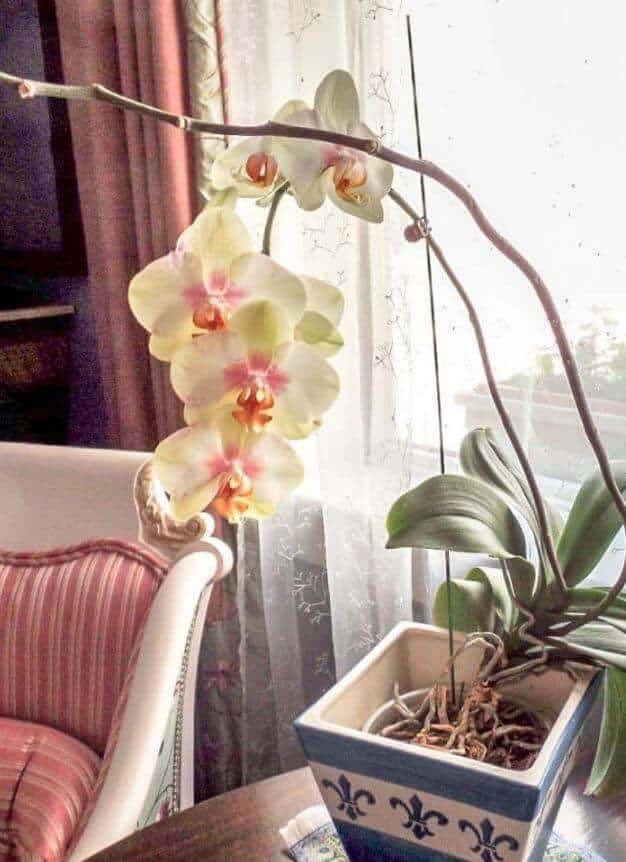
When an orchid produces numerous aerial roots in all directions, it may be due to:
- A need for support. The orchid grows more aerial rots to latch onto something even outside its pot, especially if it is leaning.
- The potting medium is too decomposed or moist and there is a problem with aeration.
- High humidity levels. An orchid will produce more aerial roots to absorb moisture in the air.
- Your orchid has not been repotted in more than two years and it needs more space.
- The variety of orchid
An orchid leaning over to the side, top-heavy, and growing extra aerial roots, is most likely attempting to find more support. To provide your orchid with more support, you can opt to repot it, stake it, or add an extra growing medium to maintain a balance. Placing rocks in the bottom of a pot will also aid in avoiding your plant toppling over.
How to Repot an Orchid Leaning Over the Pot

To repot your orchid, wait until the blooming period is finished. Prepare a sterile hand pruner and a blunt stick to work material out of roots. Prepare fresh pebbles, bark, sphagnum moss, and an orchid pot.
- Place the orchid with its container in a pot, bowl, or bucket of tepid water to soak for approximately half an hour. This will ease the loosening potting medium that is still attached or tangled within root systems. Soaking can also be done in the sink. Then remove the container and orchid and drain the excess water.
- Now remove the plant from its container. Do this by grasping the plant at its base and wiggling it out. You can also turn the pot over as long as you hold onto your plant. When all the growing medium has been dislodged, gently remove any roots growing through holes in the container. When the roots are entirely free, remove the orchid from its container.
- Control your orchid’s health. Brown or shriveled roots are not healthy and should be pruned with sterile shears. Healthy roots will appear green to silvery gray. Tips will be a darker green and somewhat swollen. Put your orchid on a paper towel while you prepare the container.
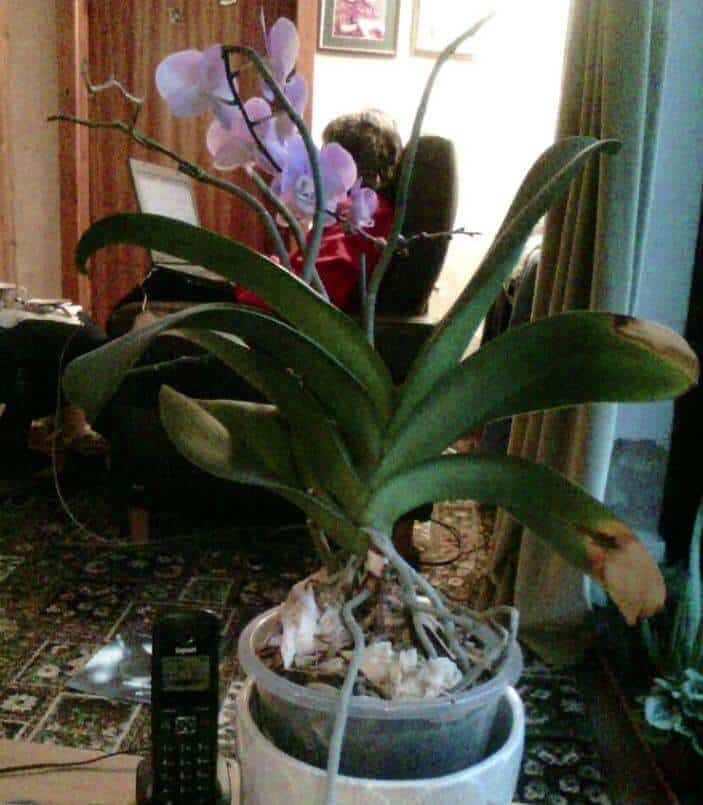
- Orchid containers or pots with more drainage holes are better for orchids that produce air roots. Clay pots are a good choice because they will aid in wicking away excess moisture. Plastic is fine but you will need to beware of overwatering. You can also reuse your orchid’s current container. When reusing a container, clean it well to remove salt buildup or any type of mossy growth. Fill your pot with a small layer of pebbles or gravel, small rocks, and stones, or even broken glass or pot chips to improve drainage.
- Reposition your orchid in its container allowing air roots to settle in the natural position they want to grow in. You may want to position roots toward drainage holes. Do not, however force, push, compress, or bend them. Air roots that grow upward should not be forcibly pushed downward.
- Begin to fill in the container with your potting medium. Use your blunt stick to position bark chips in and around the orchid’s roots. Bark chips should not be packed around the roots but should sit snugly so that the orchid is sufficiently anchored in position. Fill your orchid container to approximately one inch from the container rim. Fill the remaining inch with sphagnum moss.
- Give your orchid some time to adjust to the shock of repotting. Place it in a cool spot that has good air circulation. Wait several days before you water and as much as up to a week at the most.
- Once your orchid shows some sign of new growth, you can resume your normal care routine. Look for a new air rot or leaf.
Staking an Orchid
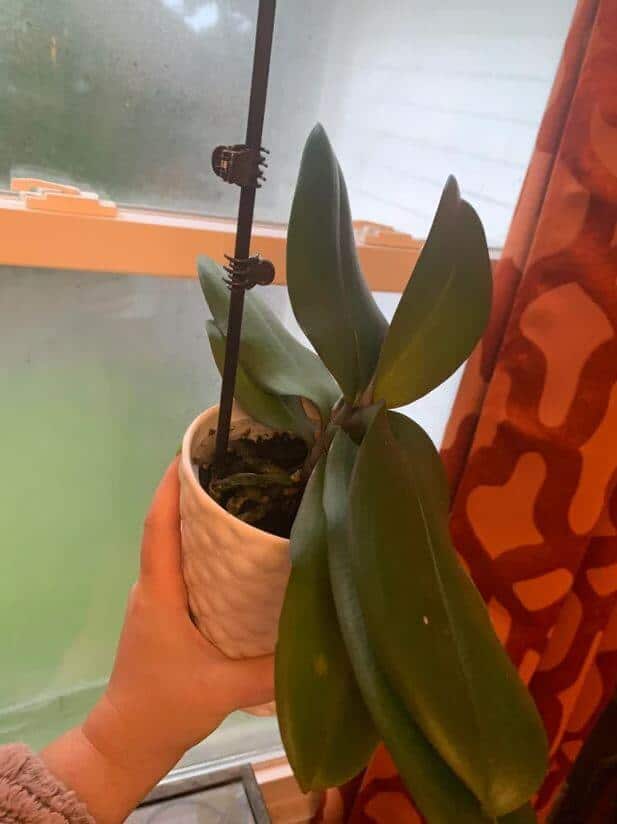
Most houseplants will not require staking, but for an orchid, a stake may provide extra support. Some orchids will produce long stems for flowers that become heavier as buds develop a bloom at the tip. Stakes as a form of support can help you better position your flowers.
There are several kinds of orchid stakes available:
- Plastic
- Transparent
- Curved
- Various shapes
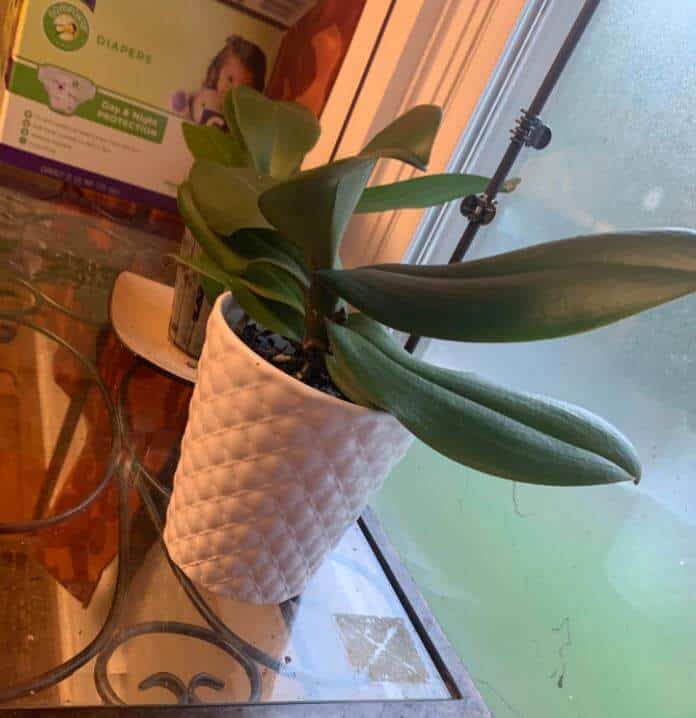
Not all varieties of orchids will require stakes, but for those that do, they will benefit from increased support for flower spikes, and you can better control the amount of space they use.
When staking an orchid, it’s best to stabilize them at the correct moment in their development. Flower spikes should be at least six inches in height although you can wait until your spike has reached up to twelve inches in height. Spikes should still be flexible, and the buds should not yet have opened if you hope to stake. If the buds have bloomed, it’s best not to change your flower’s position.
Orchid staking is not mandatory. Your flower may grow just fine without one. They can, however, grow sideways, or topple over. When staking use orchid clips or plastic ties. Do not use wire to avoid harming the stem. Most orchid plants will produce only one to two stems and these stems will need two to three months to develop.

